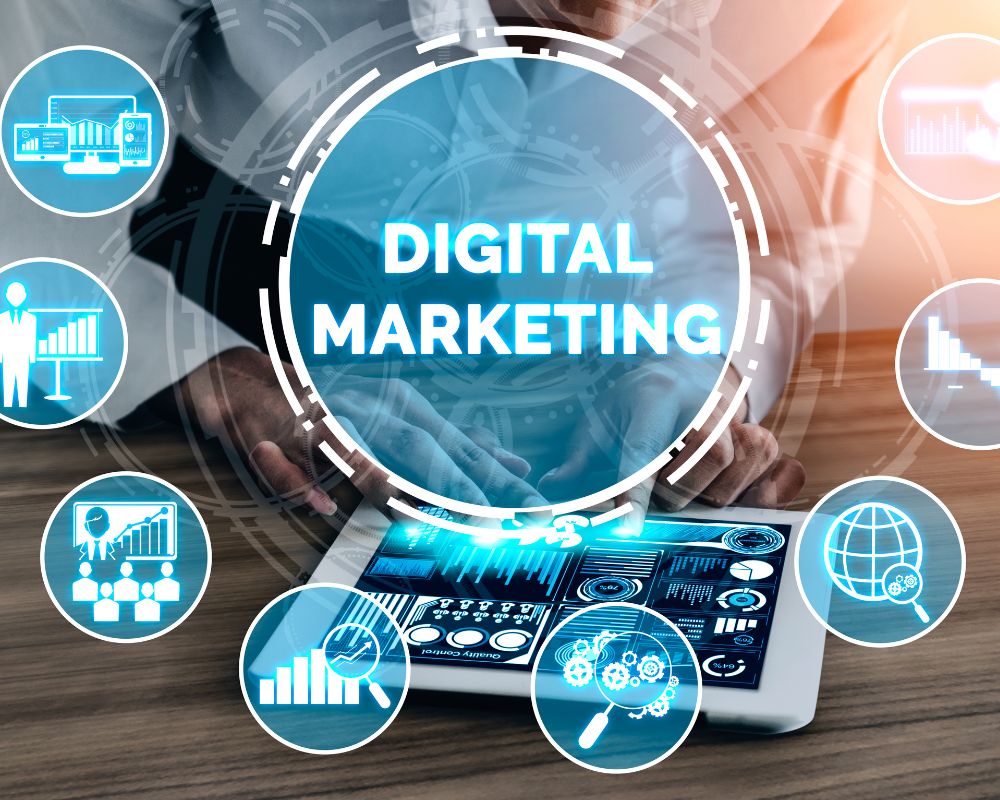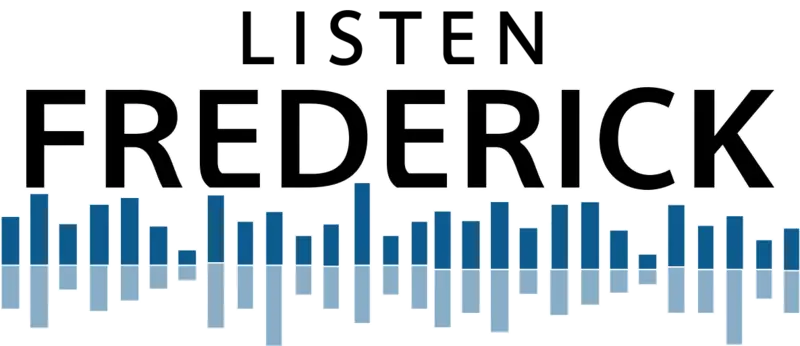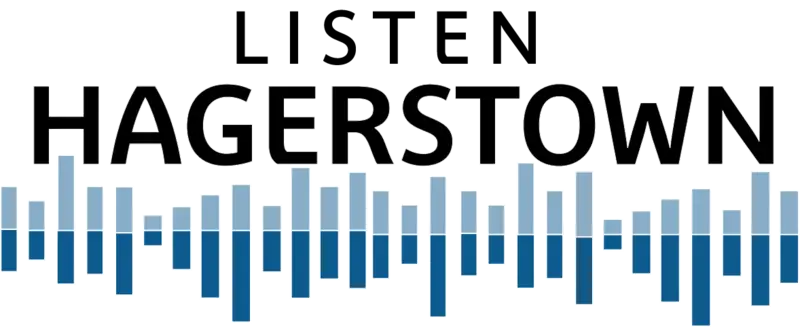There are many different terms that are meant to be the same thing when digital is explained to businesses. People don’t want to be caught off guard and admit that they don’t know something. Let’s talk about some digital buzzwords and acronyms to prepare you when talking with advertisers like our Digital Marketing team.
Geo-Targeting and Geo-Fencing Aren’t the Same
Some of the most commonly used terms in digital are Geo-Targeting and Geo-Fencing. They are often used interchangeably. However, they have their own identities. Geo-Targeting is the overall geographic area (“Geo”) a business wants to show their ads in. Usually, it’s a zip code or series of zip codes, a large radius around a location, a city, entire state, or even a country.
As an advertiser, we don’t want to reach EVERYONE in that geographic area. Using targeting strategies like Behavioral Targeting, Keyword Targeting, or using Artificial Intelligence allows us to narrow down the search. Geo-Fencing is a very tight radius around a location, which is around 500 feet, with no other targeting strategies layered in, so ANYONE in that tight radius has the potential to see that ad.
Artificial Intelligence to Target Consumers
Artificial Intelligence is showing an ad to people across all devices using machine learning to target consumers based on who is engaging with the ad. AI refers to systems or machines that mimic human intelligence to perform tasks and can improve themselves based on information collected. For example, search engines provide automated recommendations for products a person is interested in based on users’ shopping habits. With our digital advertising, we use a specific type of AI called machine learning. Machine learning systems learn and improve their performance based on data collected. It’s important to note that although all machine learning is AI, not all AI is machine learning.
Cookies & Pixels Track Behavior Across the Web
“Cookies” is another term that comes up a lot when talking about digital, especially the last couple years as Apple has worked to block third party cookies from Safari, plus iOS 14+ updates. Mozilla’s Firefox is another browser that blocks third party cookies. Additionally, Google announced a 2023 deadline to deprecate cookies and no longer support third-party tracking cookies.
Before we get to cookies, let’s talk about pixels. A tracking pixel is a small piece of code placed on a website that allows the website owner to gather information about visitors on a website — how they browse, what type of ads they click on (to determine behaviors), device, browser, IP Address, to track conversions, or serve retargeting ads. A pixel is different from a cookie but they are often used together. Both are used to track the behavior of users across web sites. The difference is how the information is delivered and where it is kept.
Cookies are saved in an individual’s browser, such as Google Chrome. They cannot follow users across their devices, and users can block cookies or clear their cookies. Tracking pixels send information directly to servers, so they don’t rely on the user’s individual browser. Pixels follow users across all of their devices, and users cannot disable pixels like they can disable cookies.
Now the good stuff — cookies. First party cookies are tracking pixels (code) that have information about a website visitor that is used by the website (or app) that the user is on. For example, filling in your username and password automatically because you’ve told the website to save your login uses a 1st party cookie. A website publisher is able to collect behavioral data about it’s users and the content they engage with. However, the website publisher (or app) can’t share it with other companies without the users’ consent (like clicking on a button that asks you to allow cookie tracking). These types of cookies are not going away; they’re here to stay.
Third party cookies are tracking pixels (code) that has information about a website visitor that is shared with another company (not the company that owns that website). For example, retargeting and conversion tracking uses 3rd party cookies. Some products that we are offer like LinkedIn, Mobile Conquesting, OTT with On-Site Visit Tracking, Facebook & Instagram, and Amazon Targeting (display, video and OTT) all use first party data where each of those companies has collected information about their users.
When it comes to third party data, we integrate with top third-party data providers like BlueKai, Eyeota, Factual, Lotame, and Oracle, so almost any audience we want to target is available to us through these data provider companies. This data is layered over the ad inventory we bid on through the ad exchanges.
Real Time Bidding Helps Us Secure Ad Space
Ad Exchanges is a technology platform that works with publishers and ad networks and purchases their impressions to then sell them to advertisers. Advertisers can purchase directly from an ad exchange, or access ad exchanges through a Demand Side Platform (DSP). So what is a Demand Side Platform? It is a technology platform that allows buyers to manage, purchase and optimize programmatic inventory from multiple ad exchanges and Supply Side Platforms (SSP) through one interface.
Inventory is purchased through real-time bidding or programmatic direct deals which are direct deals between ad sellers and ad buyers. A Supply Side Platform is a technology platform that allows publishers (websites and apps) to manage and sell programmatic inventory for advertisers to bid on. Supply Side Platforms connect to multiple ad exchanges and DSPs at once to maximize the opportunity to sell inventory.
Now that we’ve talked about where we can buy ads, let’s look at the different ways we can buy them. Programmatic buying is the use of automated technology for media buying. Programmatic advertising encompasses multiple ways of placing digital ads. It includes Real-Time Bidding, Private Marketplaces (PMPs) and Programmatic Direct buying.
Real-time bidding (RTB) is an automated process where advertisers place bids in real time for specific display ad placements. Real Time Bidding is a programmatic process, but not all programmatic advertising takes place through RTB technology.
Private Marketplaces is where advertisers can only access the private marketplace with an invitation. Typically, top publishers (websites and apps) do this and offer their ad inventory to highest bidders among the select advertisers with whom they’ve done deals granting access to inventory not available on open auctions and premium access at a lower price.
Programmatic Direct is a very similar model to the private marketplace, with the exception that advertisers and publishers agree on specific inventory based on a fixed CPM. Because the CPM is predetermined, there is no bidding process involving other publishers.
Video (OTT/CTV/Pre-Roll) Gets Your Videos In-Home
One of the more popular digital products is Video and there are a lot of different ways to utilize it. However, due to the fact that there are so many ways to use it, it can be another situation where the terms become confusing. Ad-Supported Video On Demand (AVOD) are streaming platforms like Tubi, PlutoTV, and Crackle. These platforms make their money by showing ads in between their content.
On the other side, there is Subscription Video On Demand or SVOD. These are streaming platforms like Netflix, Disney+, Discovery+ whose content requires access to a paid subscription, and typically (although not always) doesn’t have ads.
When selling video ads against a TV or cable provider, Addressable TV or Linear TV is offered. Addressable TV is serving different ad content to different audience segments watching the same TV program on IP connected TVs. These are set top boxes of cable companies or satellite providers like Comcast, DIRECTV, and Dish. Compared to the OTT digital offering we offer, with addressable TV, targeting is limited to the subscription data the company has access to. Linear TV is traditional television viewing. To watch a show, the viewer must tune in to a specific channel on a television at any appointed time. Viewers access linear TV via cable or satellite or through over-the-air broadcasts.
Another way to watch TV and movies is through a Set Top Box. I like to think of these as what distinguishes a regular TV from a smart TV. It is a device that is connected to TVs, giving them internet access which converts digital video signals into TV signals. Set Top Boxes could be Apple TV, Fire TV, or Roku boxes.
Being able to explain why people see certain ads, or why that one ad follows them wherever they go online is a great skill that we offer. We hope after reading this, you can add theses terms and acronyms to your vocabulary and you have a better understanding of digital marketing!




